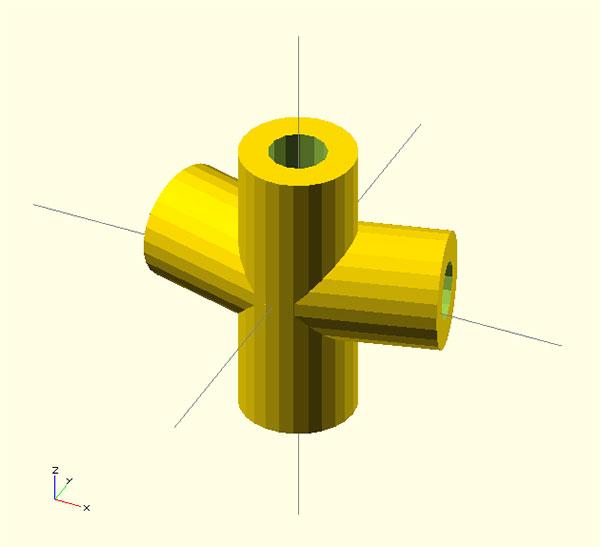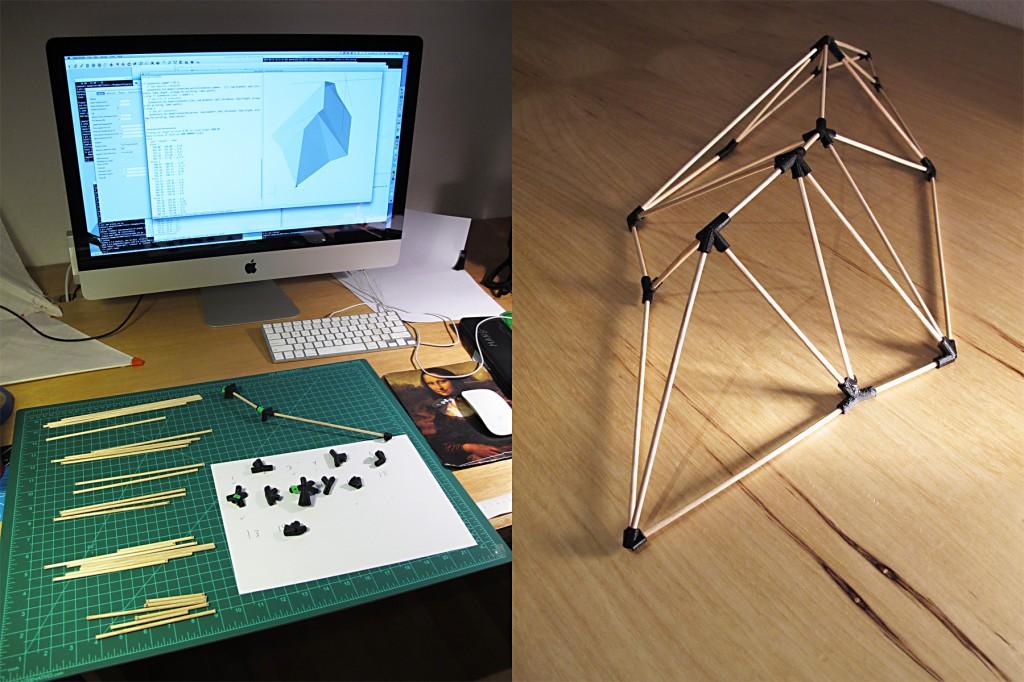Go Fly a Kite: Designer Offers “Polycon” Tutorial for 3D Printing Connector to Create Kites and More
Let’s go fly a kite! But wouldn’t it be more fun to sing a song about kites while flying a kite you actually made? According to Berlin-based artist and engineer, Michael Ang, you simply need a little bit of time, a few rods, some fabric, and… a 3D printer.
The immediate thought of 3D printing a kite is somewhat daunting when you consider the time it would take; kites aren’t known for being petite. Ang, though, has been working on a less time intensive “polygon construction” (“polycon”) technique in which the 3D printed parts are connectors that attach to rods to create a larger structure. A kite was a perfectly simple way to start out on the technique, and Ang has provided a full tutorial of his process so you can build your own. For those who find the polycon technique viable and want to expand on it, Ang has further designs for some larger structures that have more than the one connector used in the kite.
The connectors are the key to the polycon design technique, exemplified in the construction of an Eddy diamond kite. The central connector is 3D printed to bring wooden rods together in the classic diamond kite shape, and the design will result in a 50 x 50 cm kite frame. The design is parametric so that changes can easily adapt to the rod sizes you actually have on hand for your personal kite. Its small size also makes it amenable to reprints, if needed, for different sizes or multiple kites.
The kite features a cross connector that holds the rod “arms” up at what’s called the dihedral angle, which is why the Eddy kite has a propensity for flight. Getting it adjusted just right is critical, and the whole thing can be modeled using the open source OpenSCAD program. The program uses basic programming, and Ang provides all necessary codes and suggested tweaks.
 While Ang used a Prusa i3 Berlin RepRap printer and Cura printer software, he notes that any combination of 3D printer and software should do the trick. Once the connector design is adjusted and printed out, Ang uses it to connect the wooden rods. For materials, he purchased a one-meter-long, 4-mm-diameter wooden rod, paper, and string. The rod can be cut down into a 50-cm piece and two 25-cm pieces which will be connected via the 3D printed piece.
While Ang used a Prusa i3 Berlin RepRap printer and Cura printer software, he notes that any combination of 3D printer and software should do the trick. Once the connector design is adjusted and printed out, Ang uses it to connect the wooden rods. For materials, he purchased a one-meter-long, 4-mm-diameter wooden rod, paper, and string. The rod can be cut down into a 50-cm piece and two 25-cm pieces which will be connected via the 3D printed piece.
He instructs:
“The center connector goes 10cm from the top of the long rod. For the “sail”, paper does fine (cut to fit the frame, making sure that the sail is symmetrical), and you can just tape the paper to the rods. Tie a piece of string about 80cm long between the center connector and a point 4cm from the tail to make a bridle. To find the right place to tie on the long flying line, take the kite out on a breezy day and hold by the bridle, moving your hand up and down until you find a spot where the kite doesn’t try to fly up too much, or fall back down. That’s the spot to tie on your long flying line. If the kite is unstable while flying, you can add a long tail to the kite, but I haven’t found it to be necessary (though it adds to the classic look).”

The kite is a great — and fun! — way to use 3D printing to get outside. Once on board with Ang’s polycon technique, more extensive creations can emerge. Check out his “Chrysalis” design to get inspired about multi-connected pieces.
Subscribe to Our Email Newsletter
Stay up-to-date on all the latest news from the 3D printing industry and receive information and offers from third party vendors.
Print Services
Upload your 3D Models and get them printed quickly and efficiently.
You May Also Like
Consolidation in AM: How 2025 Is Shaping the Industry’s New Normal
The first half of 2025 has been marked by a clear shift in the additive manufacturing (AM) industry. Companies are no longer just focused on developing new tech by themselves....
Etsy Design Rule Change Reduces Selection of 3D Printed Goods
Online marketplace Etsy has implemented a rule change requiring all 3D printed goods on the site to be original designs. The update to the site’s Creativity Standards states, ¨Items produced using...
U.S. Congress Calls Out 3D Printing in Proposal for Commercial Reserve Manufacturing Network
Last week, the U.S. House of Representatives’ Appropriations Committee moved the FY 2026 defense bill forward to the House floor. Included in the legislation is a $131 million proposal for...
Transforming From Tourist to Native: Duro CEO Michael Corr Explains Why the Company Rebuilt its PLM Software on AI
In these early innings of the AI boom, many market analysts have expressed concern that AI spend has gotten too far ahead of the technology’s proven ability to deliver significant...


































